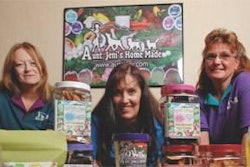
Innovation has become a key business process and is seen as essential for business growth and development. “The aim of the innovation/new product development process is to start with a collection of many ad-hoc ideas and finish with a selection of a few defined ideas to present to the market place,” explained John Adams of Adams Developments in his Petfood Forum 2009 presentation on new product development.
PetSmart worked with Edison Nation in 2009 to invite new pet product ideas from pet owners and other consumers. Del Monte developed the product in its Snausages line, Breakfast Bites, using input from a social network of dog owners it formed. “This is focus group R&D in the digital age and Web 2.0 era. Besides providing relatively inexpensive ways to get ideas and feedback from target customers, these new strategies and programs offer speed to market,” said Petfood Industry Editor-in-chief, Debbie Phillips-Donaldson in a Petfood-Connection.com online discussion. “Are these just isolated experiments with social media and other new platforms? Just fads? Or are they the wave of the future?”
New product development of pet products can be mapped out in the following steps:
1. Concept idea generation
2. Definition of concept/principle
3. Development, prototype and testing
4. Implementation marketing and launch
In the initial stage of developing a product concept, a very large number of ideas are considered against near and future strategic market needs to decide which are worth exploring further. The most fruitful ideas are often sourced from interaction with customers and encouraging involvement from employees, research has found. (It has been estimated that about 60% of good ideas arise from these areas, according to Adams.) Idea generation requires an open listening culture, with good feedback – an example of why social networking has also become so crucial, allowing in-house research to be replaced by a public forum.
Projects selected to go into development are decided on the basis of business need, potential market acceptability, risk/reward criteria, and the availability of the required resources (people, facilities and money). Progress to market is dependent on satisfactory feedback on the prototype, an assessment of the competitive response, and deliverable strategies on sourcing, marketing and pricing/margins.
The beginning of 2008 saw owners and shareholders of companies expecting a further year of market and hence company growth. New products entering both the human food and petfood markets were focusing on messages of natural, organic and environmentally friendly. Governments were encouraging companies to develop future new products and technologies that encompassed the philosophy of sustainability of materials and practices that reduced operations that promoted global warming.
But by the end of 2008, many pet-based businesses were changing their immediate strategies from one of targeting growth to one of how to operate in a recession. “In times of low or no business growth opportunity comes by seeking new things that will work, based on new needs,” says Adams. “In a recession there will always be opportunities because people will still buy and sell, it is just that they may buy with different requirements.” As the past couple years have proven, pet parents still need their petfood, but just need to see the products on the shelves differently.
Sustainable innovationin petfood—which remained a market driver throughout the recession—is not just about new concepts. It is about commercialization of technologies, products and services, and entrepreneurship. It can also be about the adoption of new processes and systems at societal level. “Green” innovation is the creation of novel and competitively priced goods, processes, systems, services and procedures designed to satisfy pet parent’s needs and provide a better quality of life for not only their pets, but the environment as well. “Finding solutions to environmental problems through eco-innovation has been, and is likely to remain, the primary focus for sustainable innovation while aiming to achieve social benefits,” says Adams.
While trends like sustainability, “eco-friendly” labelling and humanization will continue to drive growth in the US and Europe, there are still areas of the globe that remain virtually untapped.
It is projected that there will be a global population of 8.04 billion for the year 2025 and 9.37 billion for 2050.
The population of the developed countries as a group will have increased by less than 350 million between 1950 and 2050. The developing countries will have an estimated 6.8 billion people more - thus almost quintupling their 1950 population. The countries which will contribute most to world population growth over the next 30 years are India, China, Pakistan, Nigeria, Ethiopia, Indonesia, Bangladesh, Zaire and Iran. Focusing efforts on bringing new products to these developing global markets may be the key to growing and already successful petfood brand or strengthening an already impressive market share.





.png?auto=format%2Ccompress&fit=crop&h=167&q=70&w=250)











